Fed Hikes Rates, As Expected
Posted on — Leave a commentWhat did not come as a surprise to markets around the world, the Federal Open Market Committee hiked their benchmark lending rate last week by 25 basis points, or 0.25%, to the current rate of 1%. Fed fund futures traded on the CME showed about a 94% probability of a rate hike going into Wednesday’s announcement.
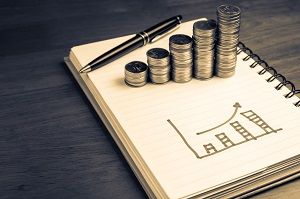
Despite the virtual certainty of a rate hike, there were dramatic moves in the financial markets across a wide range of instruments.
The S&P 500 immediately rallied after the announcement, and, along with the Nasdaq and Dow, finished the week with a noticeable gain of around 0.50%. “Stocks in general are much more attractive relative to other liquid asset classes,” said Diane Jaffee, portfolio manager at TCW, a Los Angeles-based asset manager with nearly $200 billion under supervision.
But stocks weren’t the only asset class that popped. On the fixed-income front, Treasury note and bond futures absolutely surged after the announcement. The yields on 10-year Treasury and 30-year bonds notes saw an instantaneous increase and finally broke a two-week-long losing streak.
For currencies, the US dollar index tumbled to the lowest level in over a month as a result of the Fed’s slightly hawkish outlook. The weak US dollar gave rise to higher gold and silver prices, as the most popular precious metals in the world are dominated in US dollars.
In terms of commodities, gold, silver, and palladium were all up well over 2% for the week to post the best week since February. Most of the losses for precious metals in the past couple of weeks have been recouped. Generally speaking, higher interest rates are bad for assets like equities and gold, because an increase in borrowing costs means it gets more expensive to borrow money to purchase these assets.
Nevertheless, the CEO of investment firm Amplify Investments said, “I am bullish on gold prices as I believe the U.S. dollar will continue to weaken.” From a global-macro perspective, a weakening US dollar is certainly not out of the cards, and this would ultimately benefit precious metal assets and other commodities, yet a weak dollar is not the only bullish argument for gold; global political uncertainty is definitely contributing to the rise.
Despite the gold/interest rate logic, investors seemed largely unfazed by the reality of an increased cost of borrowing. In fact, many interpreted it as an overall positive sign that the economy is finally normalizing and moving away from a zero interest-rate environment.
As noted in her speech, Fed Chair Janet Yellen expects the FOMC to raise rates at least two more times this year and at least three times in 2018. For reference, rates were only raised once in 2016.
Contrary to the current state of politics in the US and abroad, the state of US monetary policy seems to be pretty clear: the era of free loans is officially over, and policy is tightening to the direct benefit of stocks and dollar-dominated commodities, like gold.
Wall Street: Outlook for Gold – Sunny, No Chance of Rain
Posted on — Leave a commentIf Wall Street analysts were weather forecasters, the extended outlook for gold would be Sunny, and No Chance of Rain.

Gold prices surged to a higher weekly close on Friday, despite last week’s Federal Reserve interest rate increase. Rising inflation, uncertainty over the stability of the European Union, and geopolitical worries support continued gold buying by both professional money managers and individual investors.
On Friday, spot gold traded up to the $1,230 an ounce area, well above the $1,127 area seen in mid-December.
Looking Ahead
Both Wall Street and Main street players expect the gold market to rally this week, according to the latest Kitco Survey.
Wall Street: 61% analysts surveyed believe gold will continue to rally this week
Main Street: 69% of individual investors surveyed expect gold to continue to gain
How high? In early March, a new BofA Merrill Lynch Global research report outlined the positive backdrop for gold and highlighted a $1,400 per ounce year-end target for the yellow metal.
While gold is benefiting from many avenues right now, concerns about geopolitical tensions are one factor. Let’s take a deeper dive.
President Trump Chooses a Big Stick
Diplomats often talk about choosing between a “carrot” or “stick” policy when it comes to resolving global disputes.
Last week, President Trump unveiled the Administration’s budget proposal for 2018, which made his preference clear for a big stick policy.
The budget proposal offers investors specific clues on the new policy direction. The budget proposal slashes funding to 19 government agencies and directs the funding to massive new military spending – totaling an extra $54 billion to defense spending, along with $4 billion to fund the border wall with Mexico. Meanwhile, the State Department, which offers the “carrot” or diplomatic approach to geopolitical conflict is facing a proposed 28 percent budget cut in the proposal.
This opens the door to a massive military build-up and new missiles, tanks, submarines, shifts and aircrafts. Aerospace and defense sector stocks have been rallying hard in anticipation of the renewed focus on building military might.
Gold is the ultimate safe-haven investment and typically surges higher during times of geopolitical stress, terrorism, military action and war.
Numerous Trigger Points
There are plenty of hot spots around the globe, including: Russia (annexation of Crimea), the dispute over claims to South China Sea, the North Korean nuclear program, Iran’s recent missile test.
Other concerns include the potential for a massive cyber-security attack or data fraud and theft on a large scale and the uncertainty over what the rising populist moving in Europe could mean for the European Union.
There are a number of potential trigger points for conflict at any time. The Trump Administration is focused on increasing military might. Gold is poised to benefit from the escalation of conflict or tensions in numerous hot spots around the world.
Wall Street analysts expect gold to continue rallying. Current price levels around the $1,230 an ounce level could be the best buying opportunity that investors see all year. Use the relatively low levels in gold now to add protection to your portfolio.
Rare Coins Provide Tremendous Investment Opportunity
Posted on — 2 CommentsThroughout history, people have collected coins – old, rare, interesting and unique. Serious numismatics gravitate toward rare coin collecting for many reasons.
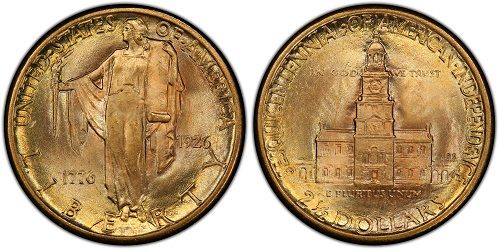
It could be the opportunity to learn more and own a piece of U.S. history. Or it could be the challenge of acquiring something extremely rare and valuable, which affords buyers a unique sense of pride of ownership. Rare coins become a family legacy and can help build conversations across generations as the history and unique story of each coin is shared. Rare coins are treasured family collections that are passed down to children and grandchildren.
While rare coin acquisition has many appeals, it also offers tremendous investment opportunity. Rare coins have increased in value in nine out of the last 10 years. Even for numismatics who collect rare coins for reasons beyond the monetary value, consider acquiring coins with a collector’s mentality as it has the potential to increase the value of your total rare coin portfolio. Here are five suggestions to help guide your coin acquisitions.
Focus on the Rarity. Buy the rarest coin you can afford. The U.S. began minting gold coins in 1795 and that continued until 1933. For example, there is a finite supply of coins from the Carson City Mint, which struck gold coins in the $5, $10 and $20 denominations from 1870 to 1885 and then again from 1889 to 1893. Unlike today’s modern world where the Federal Reserve prints money constantly, there will never be another Carson City gold coin struck.
Select a Specialty. One example could be the Peace silver dollars from 1921 to 1935. This coin commemorates the declaration of peace between the United States, Germany and Austria. More than 190 million Peace Dollars were minted, containing 90 percent silver and 10 percent copper. Or, collectors can focus on building a coin collection from a specific mints. These could include the Philadelphia Mint, the Carson City Mint, of, the San Francisco Mint which formed in 1952 in response to the California Gold Rush.
Build Sets. One example of a set is to collect U.S. $20 gold coins that were first minted in 1849 and last made in 1933. Creating and building a well-throughout set of coins can increase your level of enjoyment as you learn more about the history behind each coin.
Purchase Trophy Coins. For those who can afford it, owning a trophy coin offers so much more than the monetary investment opportunity. One such coin could be an 1804 Silver dollar, which is one of the rarest of all American coins. This is known as the “King of American Coins.”
Be choosy when it comes to your rare coin acquisitions. Chose quality over quantity. Develop a plan and purchase the best quality coin you can afford.
Gold Surges After Fed Hikes Benchmark Rate
Posted on — Leave a commentGold prices shot higher in the minutes following the Federal Reserve’s announcement to hike interest rates on Wednesday. Top Fed officials have been telegraphing expectations of this week’s 25 basis point interest rate hike for days now. Today’s action nudged the benchmark federal funds rate to a still ultra-low 0.75-1.00% range.
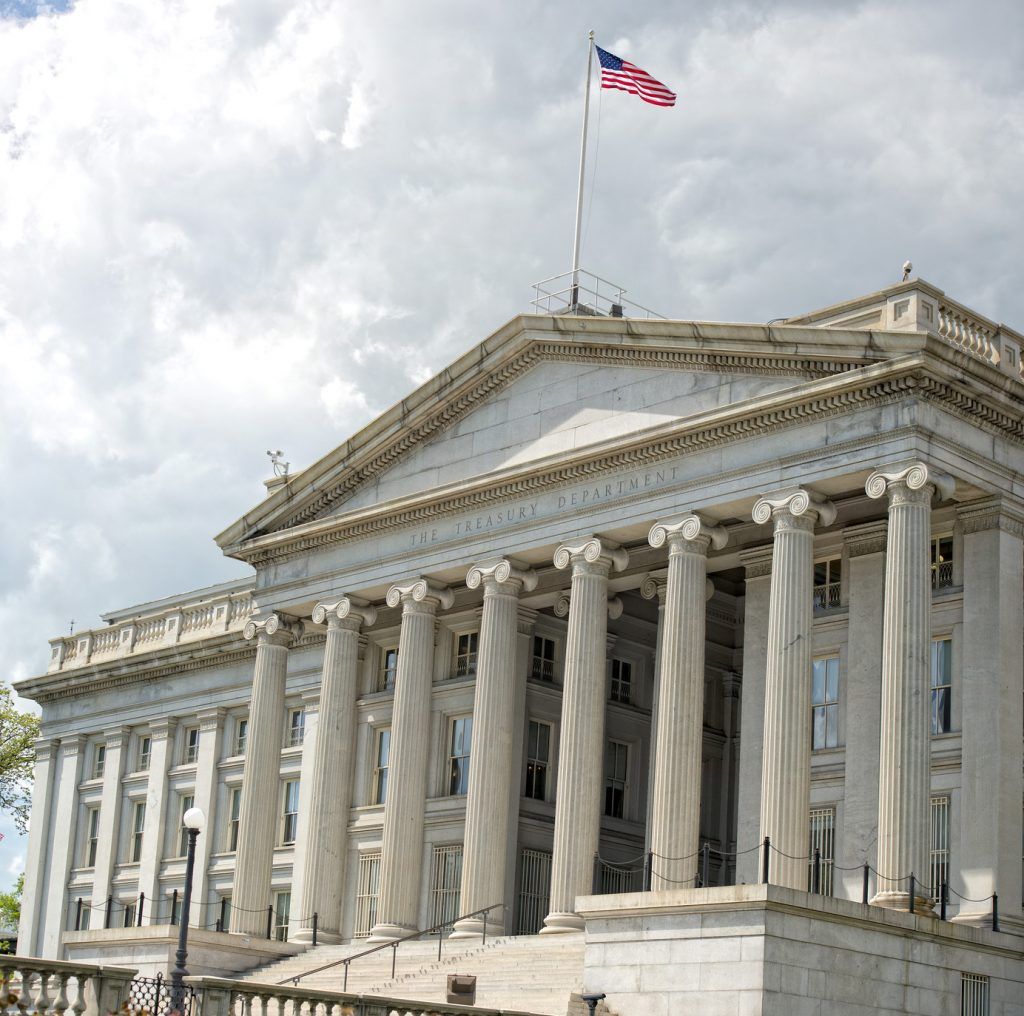
In a classic “sell the rumor, buy the fact” reaction, gold investors bought the yellow metal immediately after the announcement. Gold prices had eased in recent weeks as the market priced in expectations of the small rate hike.
Spot gold surged from around $1,200 an ounce to the $1,219 an ounce level immediately after the Fed announcement.
Wednesday’s news is net bullish for the gold market as the Federal Reserve maintained its interest rate projections at only three rate hikes in 2017. The Federal Reserve, led by Fed Chair Janet Yellen, remains in a cautious “show me” mode and today’s announcement failed to reveal intentions to raise rates at a faster pace than previously expected.
In related markets, stocks extended gains, while bond yields and the dollar fell after the Fed’s announcement. Stocks are still fueled by historically low levels of monetary policy, which has artificially created demand for equities as income-seeking investors are forced to take on more risk. The stock market is overvalued by a number of historical measures and has officially hit the nose-bleed section.
Inflation and European Elections Drive Gold Higher
The Federal Reserve’s tepid approach to raising interest rates unleashed strong demand for gold as many other drivers are supporting diversification into precious metals.
U.S. inflation numbers hit a 5-year high this week, with the annual CPI inflation rate at 2.7%. Gold traditionally outperforms during inflationary periods and the macroeconomic stage is set for a continued rise in inflation.
Smart money players are focused on Wednesday’s election in Netherlands. Uncertainty over the rise of a strong populist movement in Europe has boosted gold prices this year. A wave of populist parties are advocating protectionist policies, which would be gold-bullish if enacted. Traders will be monitoring the Dutch election results over the next several hours as a litmus test for the rest of Europe.
Current Levels Offer Excellent Buy Spot
The current levels in gold offers an excellent buying opportunity. Spot gold is well off the $1,365 per ounce level hit last summer. Current levels in gold could likely be the lowest price points for buyers in 2017.
How Gold Connects to Global Economic Growth
Posted on — Leave a commentToday, the U.S. economy is linked to the global economy. Many are asking what factors will drive long-term growth. Economists and financiers believe the answer is emerging markets. “Two-thirds of the world’s GDP growth is going to come from these markets in the course of the next 10, 12 years,” remarked Arif Naqvi at the recent World Economic Forum in Davos, Switzerland. He is the founder and CEO of private equity strategy firm The Abraaj Group. His comments reflect the sentiment of many who are looking to countries like India for clues on global growth.

However, to understand the vitality of such countries one must look deeper into the commodities trade. Commodity price trends are critical to “many emerging-market countries that rely on commodity exports, such as Russia, South Africa and Malaysia,” according to The Wall Street Journal. Therefore, there is a transitive effect in play; rising commodities help emerging-market countries and subsequently, these same countries will spur global growth. Let’s take a closer look at how this connection may play out.
Digging Deeper
A symbiotic relationship is forming between these countries and gold miners. The countries need growth in the sector to support local economies. At the same time, miners need these territories. According to an executive with Randgold Resources Ltd., “The industry has since 2000 been mining gold at a faster rate than it finds new reserves and must intensify exploration and development in emerging markets to address supply problems.”
Today, it’s unclear to what extent this interconnectedness is evident to both parties. The unassailable fact remains that miner production is likely to falter without extending its reach into these economies. Reports from the Thomas Reuters 2016 Gold Survey indicate that “There are relatively few new projects and expansions expected to begin producing this year, and those in the near-term pipeline are generally fairly modest in scale.” The bottom line: “Global mine supply is set to continue a multi-year downtrend in 2017.”
Bringing Opportunity to The Surface
Emerging markets are the answer. Miners exploring opportunities in these countries will likely discover resources while fueling the engine of global economic growth. Meanwhile, investors have issued a clear vote of confidence in gold. This trading activity may be the shot in the arm miners need to take the next step. Confidence, more than anything else, will reinvigorate production. The companies need to deploy their equipment and capital in the regions promising both return and increased trade.
Speaking of mining capabilities, Egizio Bianchini, the co-head of BMO’s global metals and mining practice, remarked that “there is “a lot of money still wanting to be deployed in this sector.” Investors are betting that miners will wake up to this reality. The surge of commodity futures in recent months reflect a broad sentiment that the new U.S. administration will deliver on promises.
Interestingly, Trump’s agenda may be secondary to the importance of what happens abroad. In the years ahead we’re likely to see the effects of globalism unfold regardless of political change. Deposits below ground don’t care who is the ruling party. At the end of the day the market drives change.
Equities Retreat as Oil Plunges
Posted on — Leave a commentAfter an impressive period of six consecutive weekly gains for equities, optimism officially wore off and skepticism undoubtedly took over, at least for a brief period last week. The S&P 500 and the Dow Jones Industrial Average both closed negative for the week, while the Nasdaq 100 continued its historical eight-week-long winning streak. The decline in stocks came on the heels of a 5% intraday crude oil sell-off, which was the biggest decline in the price of crude oil in well over an entire trading year.

At a time when institutional investors increased their net-long positions in crude oil to record levels, betting that OPEC actions would stabilize the market, the oil “crash” seemed to be exacerbated by forced selling and capitulation of bullish bets gone awry after trading in an extremely narrow range since the beginning of the year.
Unfortunately for many investors, the oil sell-off spilled into the equity markets. The S&P 500 energy sector fell 2.5% on Wednesday, making it the worst performing sector in the entire stock market. Needless to say, WTI oil took everyone by surprise and by falling beneath the critical level of $50 a barrel.
Shares of energy companies didn’t see any reprieve on Thursday and Friday, either, as oil continued to plummet again, this time below $48 a barrel.
“In the long run, either OPEC will cut, or demand will pick up a bit of this extra supply. It’s a bit of a tango around the middle-term,” said Michael Poulsen, oil risk manager at A/S Global Risk Management Ltd.
Until then, the record level of oil stockpiles seems to be the driving force behind the plunging price. The US Energy Information Administration reported that crude oil inventories rose by 8.2 million barrels, well above the forecasted 1.1 million.
Dramatic plunges in the price of oil are particularly unnerving for many investors, because this is precisely what instigated a temporary bear market in equities circa late 2015.
During this time, when oil was trading near $30 a barrel, there was a lot of chatter on Wall Street that many companies who based the majority of their revenue on high oil prices (above $50-$60/barrel), like energy companies, would quickly become insolvent.
Furthermore, when the price of oil really started to tank in 2015, the correlation between WTI crude oil and the S&P 500 was extremely high, (almost near 1.00). This meant that the S&P was catching any significant upside or downside movement in oil, and this created tremendous volatility in the market. As such, investors rapidly moved to safe-haven assets like gold and bonds.
Therefore, given the current situation of a borderline lack of physical infrastructure to store the mounting supply of oil in the US, and the fact that alternative transportation measures like Uber and Tesla are increasing in popularity, there is genuine concern about oil’s future in the modern world.
Of course, this is only one side of the oil thesis. The bullish side sees demand increasing from China and emerging economies which analysts predict will send the price of oil above $100 a barrel. This would, as a result, benefit energy companies and broad-based incises around the world.
Ultimately, nobody knows what the future holds for oil, but there seems to be one certainty: if oil continues to decline or see large price swings, the effects will unequivocally be felt in the equity markets which will likely be a direct boon for gold owners.
Gold Investors Don’t Fear A Fed Rate Hike
Posted on — Leave a commentSpot gold prices gyrated around the $1,200 per ounce level on Friday after the U.S. Labor department reported that more U.S. jobs were created than expected in February. The latest non-farm payrolls report revealed 235,000 new jobs were created, above expectations for around 190,000 new jobs.
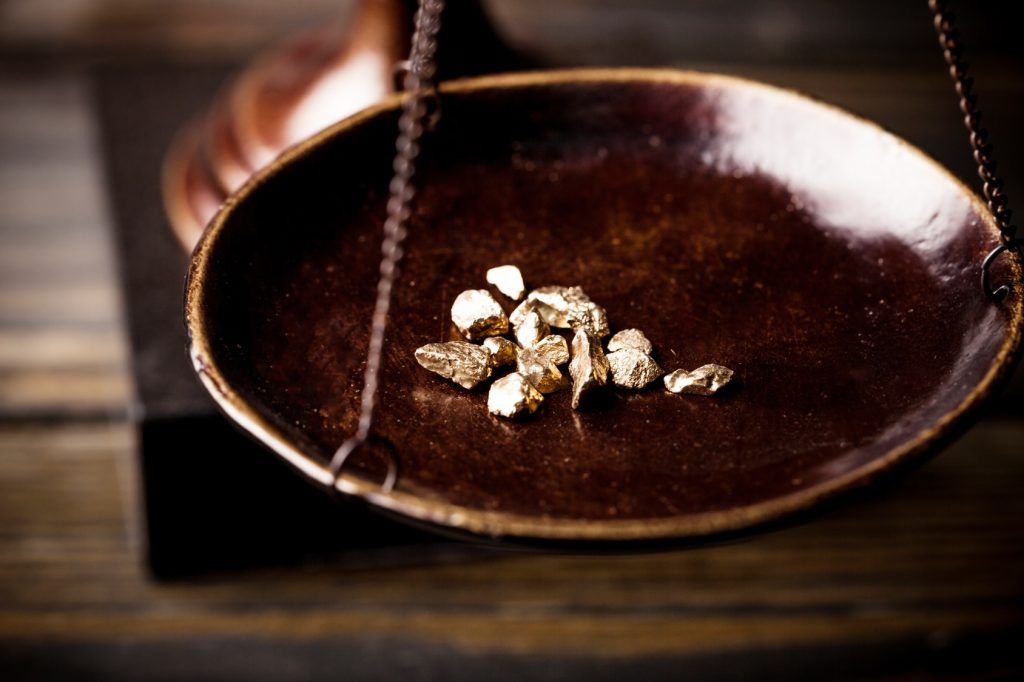
The data gives the green light for the Federal Reserve to hike interest rates at its March 15 meeting, economists said. “The 235,000 gain in non-farm payrolls in February will erase any lingering doubts that the Fed might not hike interest rates,” at the March meeting said Paul Ashworth, chief U.S. economist at Capital Economics.
Inflation Clues
The official unemployment rate was unchanged at 4.7% in February. There is already evidence that the low unemployment rate is putting upward pressure on worker’s pay. Notably, average hourly earnings edged higher to an 2.8% annual growth rate in February. Wage growth is considered to be an inflationary signal and provided support to gold in the wake of the jobs release.
Bigger picture, the gold market has been under pressure since late February, falling from the $1,258 an ounce area to the $1,196 area just ahead of the jobs report. However, the gold market actually spiked higher to the $1,207 level after the report was released as traders reacted to the increase in average hourly earnings.
A March Rate Hike Is Baked into the Cake
A Federal Reserve interest rate hike has been priced into the gold market on the recent decline from the $1,258 area. Market expectations have shifted dramatically over the last month in regards to a March interest rate hike. One month ago, the MNI PINCH (Probability of Interest Rate Change) indicator revealed at 16.9% expectation for a Fed rate hike on March 15. Just ahead of the jobs report release, those expectations had skyrocketed to 85.5%.
Typically, Federal Reserve interest rate increases are thought to be a negative factor for gold as the yellow metal pays no interest. Higher interest rates compete for investor’s assets and are thought to detract interest in the gold market.
$1,400 Gold In 2017
Current conditions, however, reveal that investors are purchasing gold for others reasons besides the low interest rate environment. Wall Street analysts remain bullish on the prospects for gold in 2017. A March 9 BofA Merrill Lynch Global Research report outlined the positive backdrop for gold and highlighted a $1,400 per ounce year-end target for gold.
“Gold has come under pressure in the run-up to the next Fed rate hike. While tighter monetary policy is not bullish, inflation and a range of uncertainties, including European elections and protectionism should support the yellow metal. As such, we see prices at $1,400/oz by year-end,” the BofA Merrill Lynch Global Research report said.
Alternative Assets Spike
Bitcoin, the digital currency which is created and held electronically, recently hit new all-time highs. The recent strength in the virtual currency suggests a lack of investor confidence in fiat currencies, says analyst Michael Kahn in a Barron’s article last week.
Why Invest In Gold
Uncertainty is on the rise. Gold is a time-honored alternative to paper money, and has proven portfolio diversification benefits. The stock market is within spitting distance of its all-time highs and by most measures is overstretched and overvalued. Blanchard clients are using stock market strength to rebalance their portfolio by selling partial stock positions and reallocate that into tangible assets, including gold and silver. Learn more about the reasons it is important for all investors to diversify their portfolio with gold here.
How A Duke University Professor Will Change What You Believe About Gold
Posted on — Leave a commentWhen we picture gold, we often conjure images of mining operations, vaults or perhaps a fancy retirement watch. Instead, we should imagine the halls of academia.

Duke University professor of finance Harvey Campbell has applied academic rigor to the question of owning gold. His findings are surprising. His research, emanating from a statistical and scientific approach, upends some of the conventional wisdom behind gold. Let’s look at two key discoveries that may change your understanding of the asset.
Look Abroad
In his 2013 paper, “The Truth About Gold: Why It Should (or Should Not) Be Part of Your Asset Allocation Strategy,” Harvey concludes that those considering a gold purchase should think less about the decision as an inflation hedge. Rather, according to Harvey, investors should consider demand on the international level because “a move by developing markets to hold more gold could exert substantial upward pressure on the price of gold.” What can the international community’s appetite for gold tell us about the likelihood of such a move?
China’s bar and coin demand finished 2016 exceeding totals for the last two years. In fact, the Q4 demand in the country increased by 86% year-over-year according to the World Gold Council (WGC). This growth reflects the burgeoning interest in gold among Chinese citizens who were unable to own gold before 2004 legally. Additional research from the WGC reinforces the notion that, “Investors in developing markets are willing to invest more of their income,” thereby buoying gold purchases and its value. The Chinese invest 37% of their income compared to only 17% in the U.S. The robust drive for gold among these developing markets is hardly a surprise given the commodity’s 250% gain since 2003. This outperformance surpasses the S&P 500 total return and the Barclays US Corporate Bond total return over the same period.
Interestingly, the motivation to own gold (e.g. growth in value, safe haven) differs from the factor boosting its value: international purchases. Moreover, Professor Harvey has identified a second elusive characteristic boosting the outlook for gold: the economic policy uncertainty. Let’s take a closer look.
The Most Important Number You Don’t Know
Additional work from Harvey further illustrates why we can expect global gold consumption to continue. The professor has used a special metric called the Economic Policy Uncertainty Index (EPU) to understand how the pervasive anxiety surrounding politics can influence gold prices. Academics at Northwestern University, Stanford University and the University of Chicago developed the index to form a consistent measurement of uncertainty. The data used to formulate the index consists of three parts. First, the frequency of economic policy uncertainty discussions in major U.S. papers. Second, future tax uncertainty based on Congressional Budget Office data. Third, a survey of professional forecasters provided by the Federal Reserve Bank of Philadelphia.
Today the EPU is higher than it has ever been.
Why does that matter? “According to Prof. Harvey, gold shows a modest historical correlation with the global version of the EPU,” reports The Wall Street Journal. Therefore, a high degree of uncertainty can reasonably “translates into a bullish forecast for gold,” continues the WSJ. As the global community experiences trepidations amid Trump, Brexit, a looming ‘Frexit’, Russia and North Korea the index rises. It’s unlikely any of these major sociopolitical concerns will dissipate soon. Instead, the widespread sentiment is that we’re witnessing a secular trend.
Gold is a particularly challenging investment to value given the array of unquantifiable price influencers. However, the work from Harvey illustrates scientifically backed methods which give investors reason to agree with the professor’s conclusion from his 2013 paper: “I believe that gold should be part of a portfolio.”
High Net Worth Individuals Snap Up Rare Coins
Posted on — Leave a commentCollectors tend to collect what they like, not necessarily what they think will make the most money. High-net worth individuals have both the opportunity and tendency to invest in their passions.
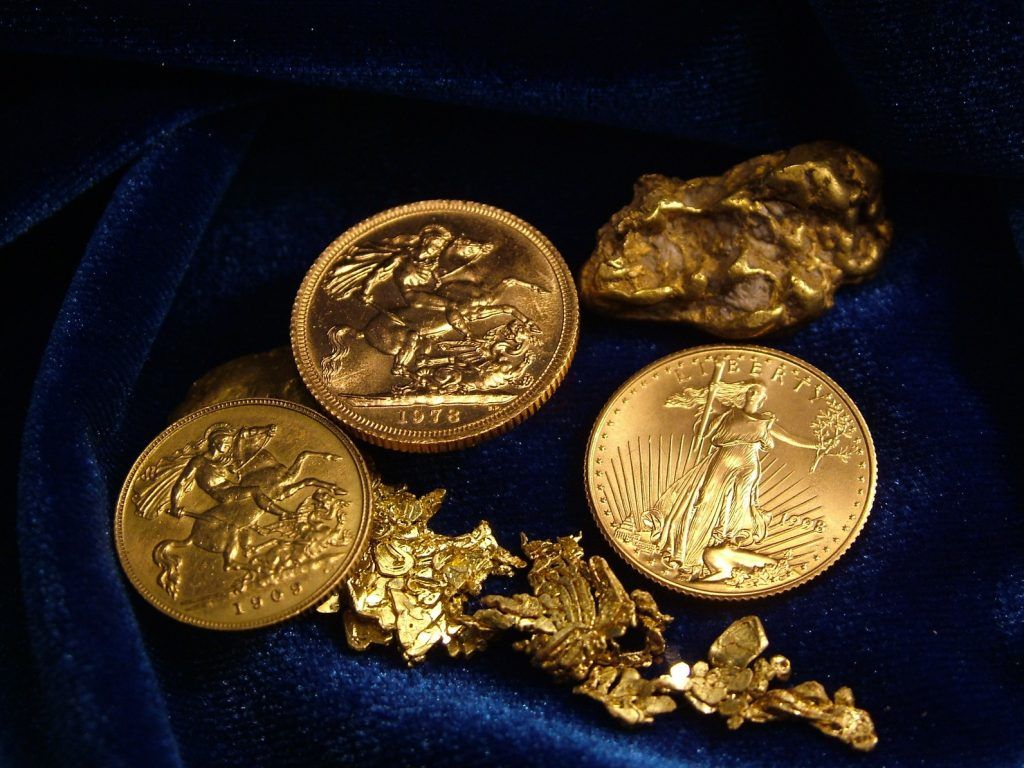
When it comes to the rare coin market, collectors have been able to have their cake and eat it too in recent years. Rare coins values have increased significantly over the last ten years.
What The Rich Are Buying Now
The latest results of the Knight Frank Luxury Investment Index revealed that high net worth individuals continue to favor cars, wine and coins as an investment and those three categories outpaced other luxury investments over a 10-year period.
10-year Returns
| Cars | +457% |
| Wine | +267% |
| Coins | +195% |
| Jewelry | +147% |
| Art | +139% |
| Stamps | +133% |
| Colored Diamonds | +111% |
| Watches | +66% |
| Chinese Ceramics | +6% |
| Furniture | -31% |
After the global financial crisis, many high net worth individuals began exploring tangible assets as a way to protect against paper investment (stock/bond losses) and to preserve wealth.
Rare coins remain one of the best long-term investment tangible asset vehicles because they are historically significant and in extremely limited supply. Here’s an example:
The first dollar coin minted in 1794 by the U.S. government is also the most expensive – It sold for $7.85 million in 2005.
The scarcity of many rare U.S. coins creates an environment where investors may only have a once in a lifetime opportunity to purchase a specific coin. This means that investors who have the ability to hold these coins for periods of years have a powerful opportunity to preserve principal and also increase value.
Collectibles are also known as emotional assets or passion investments. Once you own a piece of history it becomes a family legacy and a treasure to pass down from generation to generation.
Current Market Dynamics
Gold and silver prices jumped in the first two months of 2017, driven higher in part by concerns about inflation, as well as overall uncertainty regarding the global and domestic economic and political environment.
Increased Demand
Many new buyers have entered the rare coin market in recent years, which is increasing demand and driving prices higher.
Family Offices that manage assets for ultra-high net worth families are turning to the rare coin market in a focused strategy to promote portfolio growth, wealth preservation and tax efficiency. Family offices develop strategies for high net worth families, with the goals of capital growth, but also perhaps even more importantly – preserving wealth – for the next generation.
These family office managers recognize the value of physical gold and rare coins for their diversification, wealth preservation and insurance against the continued devaluation of fiat money. As family offices become bigger players in the hard asset arena, it has created a new crop of buyers, which is pressuring prices higher.
The Rare Coin Outlook
We are entering a unique era for the rare coin market – conditions are developing that could catapult prices sharply higher over the next few years. Blanchard and Company expects the rare coin market to outpace the strength in the underlying precious metals markets this year as inflation expectations continue to increase.
When inflation picks up, history shows that rare coins appreciate more significantly and at a faster pace than gold bullion. Learn more in our exclusive 35-year study on the long-term investment performance of gold bullion and rare coins. Download the report here.
Stocks Steady Amid Fed Speeches
Posted on — Leave a commentAfter an unprecedented rally, US stocks finally retreated late last week but still managed to finish with a noticeable weekly gain. On Wednesday, the three benchmark US indices were up well over 1% after President Trump delivered a speech to congress. This strong daily gain was the largest intraday move for stock indices since the beginning of the year.

Beyond the congressional address, the main chatter on the Street focused around a potential March interest rate hike which Fed Chair Janet Yellen said is “likely appropriate.”
Because this was Yellen’s last scheduled public talk before the US central bank meets later this month, investors were closely monitoring her every word to gauge when an interest rate increase will happen. The consensus seems to be that the Fed will raise rates at least once this year.
In the currency and fixed-income markets, the US dollar and treasury yields climbed because of the expected rate increase.
In terms of other financial assets, as the Federal Reserve raises their lending rate, precious metals typically tend to decline, because it gets more expensive to borrow money to purchase them. As such, gold and silver declined amid the heightened interest rate speculation, with gold posting its second weekly decline for the year and silver posting its first weekly decline, respectively.
For now, the key driver of both the precious metals and equity markets seems to hinge around economic policy.
“Policy is likely to be tighter, but that’s because the U.S. economy is better and the U.S. consumer is consuming the goods of the world,” said James Athey, manager at Aberdeen Asset Management with client assets over $350 billion.
He went on to describe how investors always get nervous after stocks break new highs, but rates are still low in absolute terms, growth and inflation are picking up, and the Fed’s balance sheet is still enormous, which he thinks might just be the perfect storm for equity markets.
Looking oversees, although European stocks finished the week with a lackluster trading day, the London-based FTSE 100 index advanced 1.76% higher for the week, spurring investor confidence about the resilience of global markets. In Asia, stocks capped the week with modest losses finally putting an end to a six-week-long rally.
In total, investors didn’t seem to lose any confidence in global equity or precious metals markets, even in the face of a little economic uncertainty and potential interest rate movement. Along with equities, gold and silver futures trading on the COMEX quickly recovered most of their losses on Friday going into the weekend, which, historically, is a bullish signal.








